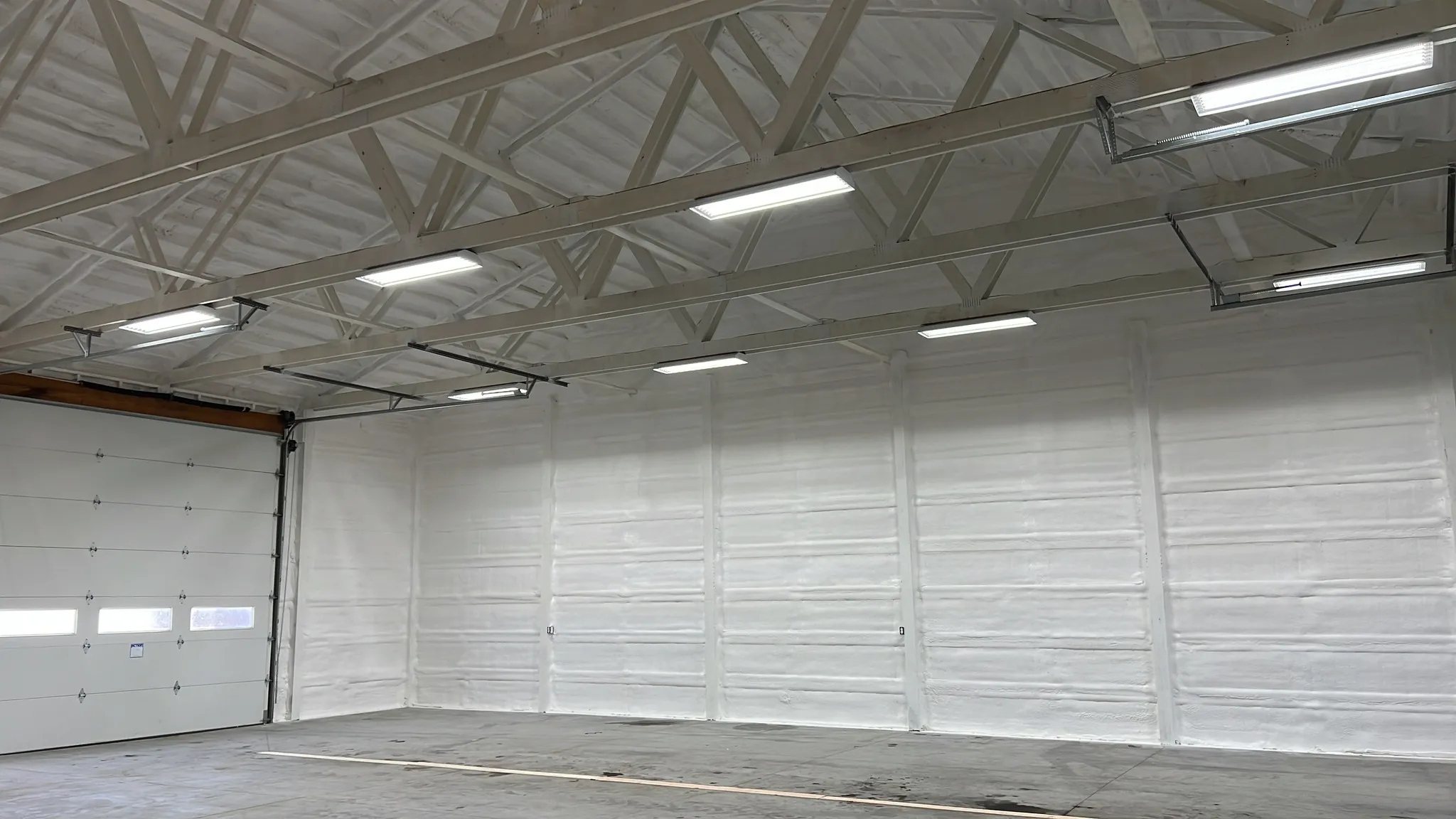Spray foam insulation delivers superior thermal performance, air sealing capabilities, and moisture control that significantly reduces energy consumption while enhancing indoor comfort. This advanced insulation method creates an airtight barrier that prevents heat transfer, air leaks, and moisture infiltration, resulting in energy savings of 20-50% compared to traditional insulation materials. The cellular structure of spray foam expands to fill gaps and cracks that other insulation types cannot reach, creating a continuous thermal envelope that maintains consistent temperatures year-round.
Modern spray foam technology has evolved to address multiple building performance challenges simultaneously, making it a comprehensive solution rather than just an insulation upgrade. Professional installation ensures optimal coverage and performance, with the material’s self-adhering properties eliminating common issues like settling, sagging, or gap formation that plague conventional insulation systems.
Understanding Spray Foam Technology
Spray foam insulation consists of two chemical components that react when mixed, creating a foam that expands and hardens into a solid insulating layer. The expansion process allows the material to conform to irregular surfaces and penetrate small spaces, creating an effective air barrier alongside thermal insulation.
Two primary types serve different applications based on density and performance characteristics. Open-cell foam offers excellent sound dampening properties and flexibility, while closed-cell foam provides superior structural strength and moisture resistance. Each type delivers distinct advan
tages depending on climate conditions and building requirements.
The chemical reaction generates heat during application, allowing the foam to cure and adhere permanently to substrates. This process creates a monolithic barrier that eliminates thermal bridging and reduces air infiltration more effectively than traditional insulation materials.
Performance Comparison Analysis
| Insulation Type | R-Value per Inch | Air Sealing | Moisture Resistance | Lifespan | Settlement Risk |
|---|---|---|---|---|---|
| Spray Foam (Closed-Cell) | 6.0-6.5 | Excellent | High | 50+ years | None |
| Spray Foam (Open-Cell) | 3.5-3.8 | Very Good | Moderate | 50+ years | None |
| Fiberglass Batts | 2.2-2.7 | Poor | Low | 20-30 years | High |
| Cellulose | 3.2-3.8 | Fair | Moderate | 20-25 years | Moderate |
| Mineral Wool | 3.0-3.3 | Fair | Good | 30+ years | Low |
Energy Efficiency Benefits
Spray foam insulation reduces energy consumption by creating a comprehensive thermal barrier that addresses multiple heat transfer mechanisms. The material’s expansion properties seal air leaks that account for 25-40% of heating and cooling energy loss in typical buildings.
According to the Department of Energy, buildings with spray foam insulation demonstrate 20-50% lower energy usage compared to structures with conventional insulation systems. This reduction stems from the elimination of convective heat loss, which occurs when air moves through gaps in traditional insulation materials.
Bonus Tip: Installing spray foam in rim joists and band boards provides exceptional return on investment, as these areas typically contain numerous air leaks that significantly impact energy performance.
The continuous insulation layer prevents thermal bridging through structural elements, maintaining consistent interior temperatures with less HVAC system operation. This reduced equipment runtime extends system lifespan while lowering maintenance requirements.
Technical Specifications
| Property | Open-Cell Foam | Closed-Cell Foam |
|---|---|---|
| Density | 0.4-0.6 lb/ft³ | 1.8-2.2 lb/ft³ |
| R-Value | 3.5-3.8 per inch | 6.0-6.5 per inch |
| Vapor Permeability | 16-20 perms | 0.8-1.2 perms |
| Compressive Strength | 3-5 psi | 25-30 psi |
| Water Absorption | 2-5% | <2% |
| Operating Temperature | -50°F to 200°F | -50°F to 200°F |
Installation Considerations
Professional installation ensures optimal performance and safety during the application process. The chemical reaction generates heat and fumes that require proper ventilation and protective equipment, making DIY installation inadvisable for most applications.
Surface preparation affects adhesion quality and long-term performance. Clean, dry substrates allow proper foam adhesion, while contaminated surfaces may result in reduced bond strength or coverage gaps.
Weather conditions influence application success, with temperature and humidity requirements varying by product formulation. Professional installers understand these parameters and adjust application techniques accordingly to ensure consistent results.

Climate-Specific Performance
Spray foam insulation performs effectively across diverse climate zones, adapting to temperature extremes and humidity variations better than traditional materials. In cold climates, the continuous insulation layer prevents ice dam formation by eliminating heat loss through the roof assembly.
Hot, humid climates benefit from spray foam’s moisture control properties, which prevent condensation within air-conditioned spaces. The material maintains its insulating value regardless of humidity levels, unlike cellulose or fiberglass insulation that may lose effectiveness when damp.
According to the International Code Council, buildings in extreme climate zones show the greatest energy savings when using spray foam insulation, with some structures achieving net-zero energy consumption when combined with efficient HVAC systems.
Valley Spray Works Professional Services
Valley Spray Works offers comprehensive insulation solutions tailored to specific building performance requirements:
- Open-Cell Spray Foam: Provides excellent thermal performance and sound dampening for interior applications, ideal for walls and floors where vapor permeability is desired.
- Closed-Cell Spray Foam: Delivers maximum insulation value and structural reinforcement for demanding applications including foundations, roofs, and extreme climate installations.
- Spray Foam Roof Insulation: Creates continuous roof insulation systems that eliminate thermal bridging while providing weather-resistant barriers for commercial and residential applications.
- Blown-In Insulation: Offers cost-effective insulation upgrades for existing structures where spray foam application may not be practical or necessary.
Common Questions About Spray Foam Selection
Which spray foam type is best for my application?
Homeowners frequently ask about foam type selection based on specific applications and performance requirements. Open-cell foam works well for interior walls where sound control matters, while closed-cell foam suits exterior applications requiring moisture resistance and structural strength.
When is the best time to install spray foam insulation?
Installation timing questions arise regarding seasonal weather impacts and occupancy schedules. Spring and fall typically provide optimal installation conditions, though professional installers can work effectively in most weather conditions with proper preparation.
What performance can I expect from spray foam insulation?
Performance expectations vary based on existing building conditions and installation quality. Professional assessment determines realistic energy savings and comfort improvements based on current insulation condition and air leakage rates.
Get Professional Spray Foam Installation
Effective insulation upgrades require professional assessment and installation to achieve optimal performance and safety. Valley Spray Works provides comprehensive evaluation services to determine the most suitable insulation solutions for specific building requirements and performance objectives.
Professional installation ensures proper application techniques, safety protocols, and quality control measures that maximize long-term performance. Experienced installers understand building science principles and local climate requirements that affect insulation system design and performance.
Spray Foam Insulation Questions Answered
How long does spray foam insulation maintain its effectiveness?
Properly installed spray foam insulation maintains its thermal performance and structural integrity for 50+ years without settling or degrading. The closed-cell structure remains stable under normal building conditions, while the adhesion to substrates prevents gap formation that reduces effectiveness in other insulation types.
Can spray foam insulation reduce heating and cooling system requirements?
Spray foam insulation often allows for smaller HVAC equipment due to reduced heating and cooling loads. Buildings with comprehensive spray foam installation typically require 30-50% less heating and cooling capacity, resulting in equipment cost savings and improved system efficiency.
Does spray foam insulation require special ventilation considerations?
Buildings with spray foam insulation benefit from controlled ventilation systems due to reduced natural air infiltration. Heat recovery ventilators or energy recovery ventilators maintain indoor air quality while preserving energy efficiency by conditioning incoming fresh air with outgoing stale air.
What maintenance does spray foam insulation require over time?
Spray foam insulation requires minimal maintenance once properly installed and cured. The material does not settle, sag, or degrade under normal conditions, eliminating the need for periodic replacement or supplementation that other insulation types require.



